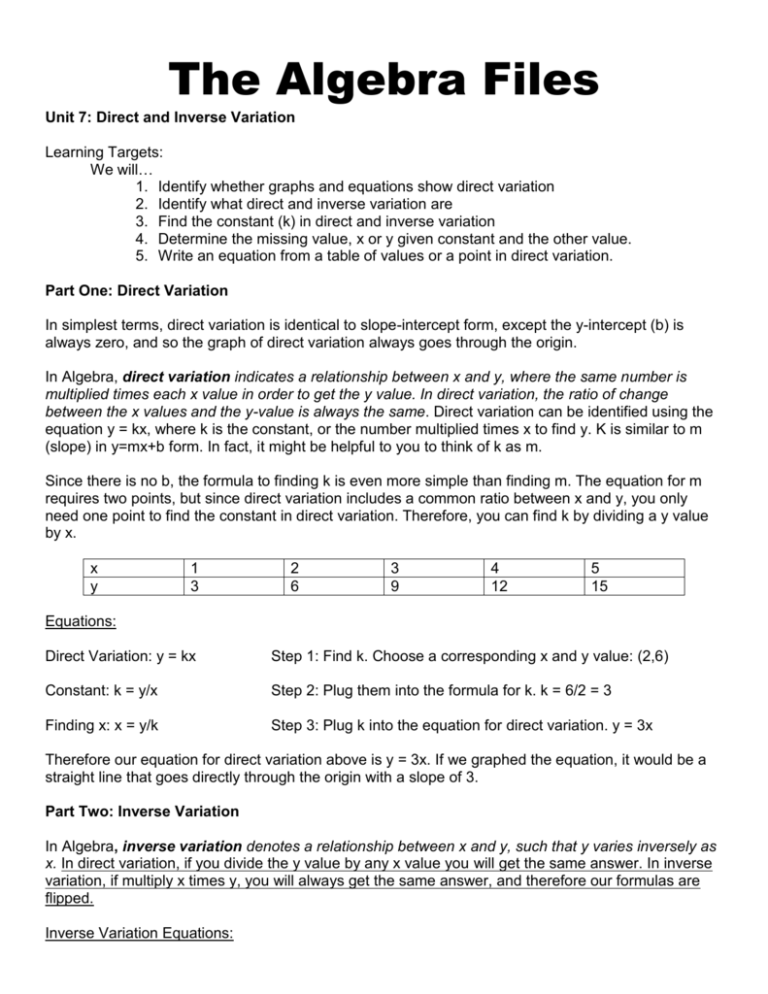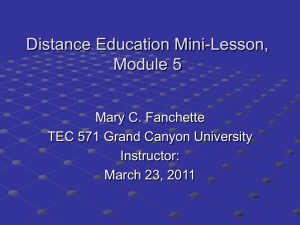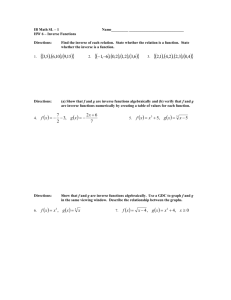Unit 7: Direct and Inverse Variation
advertisement

The Algebra Files Unit 7: Direct and Inverse Variation Learning Targets: We will… 1. Identify whether graphs and equations show direct variation 2. Identify what direct and inverse variation are 3. Find the constant (k) in direct and inverse variation 4. Determine the missing value, x or y given constant and the other value. 5. Write an equation from a table of values or a point in direct variation. Part One: Direct Variation In simplest terms, direct variation is identical to slope-intercept form, except the y-intercept (b) is always zero, and so the graph of direct variation always goes through the origin. In Algebra, direct variation indicates a relationship between x and y, where the same number is multiplied times each x value in order to get the y value. In direct variation, the ratio of change between the x values and the y-value is always the same. Direct variation can be identified using the equation y = kx, where k is the constant, or the number multiplied times x to find y. K is similar to m (slope) in y=mx+b form. In fact, it might be helpful to you to think of k as m. Since there is no b, the formula to finding k is even more simple than finding m. The equation for m requires two points, but since direct variation includes a common ratio between x and y, you only need one point to find the constant in direct variation. Therefore, you can find k by dividing a y value by x. x y 1 3 2 6 3 9 4 12 5 15 Equations: Direct Variation: y = kx Step 1: Find k. Choose a corresponding x and y value: (2,6) Constant: k = y/x Step 2: Plug them into the formula for k. k = 6/2 = 3 Finding x: x = y/k Step 3: Plug k into the equation for direct variation. y = 3x Therefore our equation for direct variation above is y = 3x. If we graphed the equation, it would be a straight line that goes directly through the origin with a slope of 3. Part Two: Inverse Variation In Algebra, inverse variation denotes a relationship between x and y, such that y varies inversely as x. In direct variation, if you divide the y value by any x value you will get the same answer. In inverse variation, if multiply x times y, you will always get the same answer, and therefore our formulas are flipped. Inverse Variation Equations: The Algebra Files Inverse Variation: y = k/x Constant: k = yx Finding x: x = k/y You will notice that each of the equations is the exact inverse of the direct variation equations. Inverse Variation looks like the below: x y 5 16 10 8 20 4 40 2 80 1 You will notice that in each case, if you multiply x times y, you will get 80. Now we can plug our numbers into the equations in order to determine the equation. Our formula for k is k = yx, and so I can choose any corresponding x and y values in order to determine k. I am going to choose (10,8). Plugging them into my equation I get k = 8x10=80 Since k = 80, I can plug k into my equation for direct variation and write: y = 80/x. I could then plug the x and y values into the equation to see if it were true. Directions: Answer the questions below based on the reading above. 1. What is direct variation? 2. What is inverse variation? 3. How do you find the constant in direct variation? 4. How do you find the constant in inverse variation? 5. Look at the table below. Does it show direct or inverse variation? _______________________ a. What is the k value of the equation? ____________________ b. What is the direct variation equation?____________________ x y 1 -4 2 -8 3 -12 4 -16








